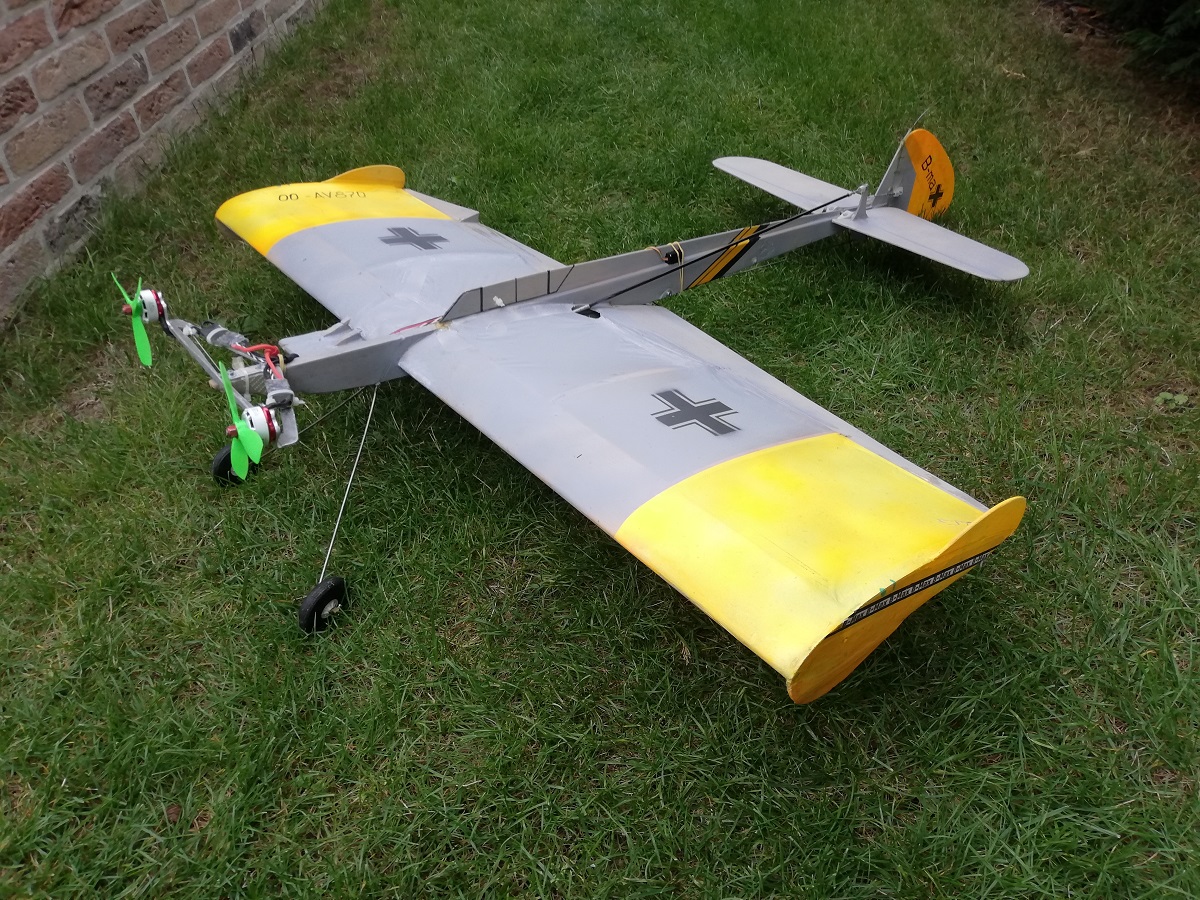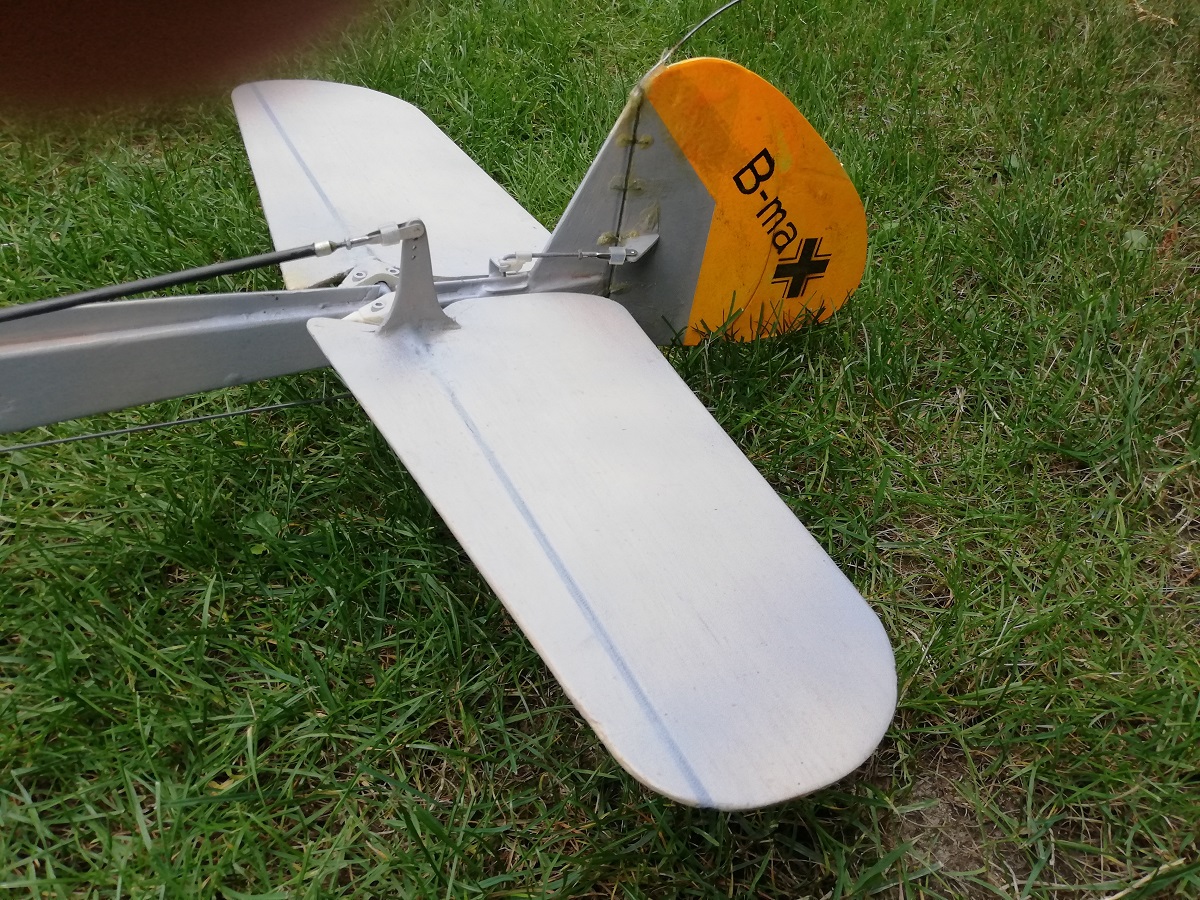Bart wrote to me as follows, giving us some more details about his syuper-scoring model, the ‘B-maX’:
“Hi Mike,
“Of course you can use my words on the website, I’m actually honored to notice that my English doesn’t seem that bad after all…
I’d like to extend and modify the text as follows hereunder, because I think it’s also good that people in these “polarising” times keep hearing the positive message that we’re actually all “united in diversity”:
“Some details about the winning plane in Almere, probably worth mentioning on the Carrier website: I dedicate this victory to sainted Max Uttien. He constructed (light and strong) the fuselage and the wings of our joint project, during the time that I had to recover from shoulder surgery a few years ago. The plane was therefor called B-maX (B from Bart, maX from Max, obviously) as one can read at the rudder (see pictures).




“I actually used the Nats 2018 for the very first test flights and after different try outs (e.g. in Hammersbach 2019, my first time over 300 points and Herentals 2019, no success that time) the plane was subject to lots of small changes. During the Covid period I did not fly at all, but used home time to renovate the house. This year however, all the small improvements I made finally seem to pay off. The total weight of the plane when ready for flight, including battery, is 1030 grams. The ‘strange looking’ rudder almost completely behind the horizontal elevator makes it a bit easier to get the plane more straight during the quick rounds, because it then acts like a wind vane with a decent lever. The plane has so much lift with the full (split) flaps that are used, that it has to fly nose-down for horizontal flight, similar to below picture of a Canadian “Caribou” performing a ‘wheelbarrow touch and go’.

“Not easy, because as a Control Line pilot we’re used to react to any deviation of the fuselage not being horizontal: I’m still trying to kick the habit…
“My score in Almere made me remember having read some ideas and comments about splitting the BCD contest in two groups: one for more experimental, the other for more traditional planes, both having another level of scores at the time of that discussion. What Max and Jan strived for then, not so long ago, was to keep only one group of people and let each of the individuals out of the group their own vision or approach. Create fun and gladness when own goals are met, whether this is 150 or 200 or 250 or 587 points: the score itself does not matter so much, as long as each of us has fun in getting near his or her own goal… Any score is an achievement: it means one controls the speed, the height, the transition periods, not leaving the circle, staying at maximum 30°, controlling the plane with wind literally coming from all 4 directions, beating wind gusts and turbulence, perform a precision landing and all that with high concentration.
“Higher scores might be set now, but that surely does not mean that there was no progress in the “early days”! Also in the more traditional planes and in earlier competition, a lot of modifications were made that don’t correspond with the bigger real planes that were taken as a mastermodel: people used completely different wing profiles or added a lot of side rudder, weight to the outside wing, model motors in comparison to the model airplanes were already much stronger than any normal prop motor compared to real planes, people even used clockwise running motors to have beneficial outward roll when suddenly a burst of power needed to be applied, one bent wings or used elevators with no straight angle in comparison with the wings, found ingenious ways to control motor speed better during slow ànd fast speed, combined with elevator changes. Now electrical motors and ducted fans have arrived at the scene…
“It should be quite clear that there is and always will be progress (look at F1 or the Red Bull airplane competition), be it slow or with more disruptive results. I believe one high score can give a boost to renewed enthusiasm for all colleague pilots to set new goals: that is not a threat, it’s an opportunity.
So, for next year, let us continue to go for more (400?) points, knowing the Chinese proverb: “you have to aim high, the arrow sinks during its flight” 😉
And apart from the BCD battlefield, where we are “United in Diversity”, what could be better than the reunion with old friends?

Kind regards,
Bart Van den Bossche, Belgium”
